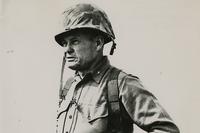As a young girl, Remedios Gomez-Paraiso loved all things beauty-related. One of eight children, she made dresses and perfumes to help her family earn money, rode horses and started competing in beauty pageants as a high schooler. By all accounts, she was the graceful and pretty daughter of the mayor of Mexico, Pampanga, her hometown in the Philippines. Her life changed dramatically when the Japanese invaded in 1941.
Her father, Basilio, was a peasant landowner who fought for the rights of fellow peasants and small landowners. His struggle is why the town elected him mayor. When the Japanese invaded, Basilio Gomez was vice mayor of Mexico and resisted the Japanese occupation of his town. The Japanese tortured and killed Basilio and paraded his body across town for all to see.
His daughter vowed to avenge his death on the invaders. After the family moved to neighboring Tarlac province, Remedios, then 22 years old, joined the Hukbalahap resistance movement with her brother Oscar. After Remedios first learned to be a nurse, the Hukbalahap taught her the ways of the Filipino guerrilla: modern combat, how to handle weapons, stage an ambush and how to retreat.
Remedios was renamed Liwayway and became renowned for her dedication, discipline and for wearing formal dress and lipstick in combat. After only a few months, she was put in command of her own guerrilla unit.

Known as Kumander Liwayway, she led raids on Japanese garrisons, captured enemy supplies and ammunition, and established a front to keep Japanese troops from advancing farther into Tarlac. In one battle, she and two other guerrilla units engaged a much larger Japanese force. In what would come to be called "the Battle of Kamansi," the Japanese and Filipinos fought for hours, until it looked like the guerrillas might be overrun.
The overall commander, her first commander, signaled a retreat, but Kumander Liwayway and her troops held their ground against overwhelming Japanese numbers. By the time the smoke cleared from the battlefield, the Japanese were forced into a retreat. After the Battle of Kamansi, the legend of the beauty queen guerrilla fighter spread to other provinces.
Her reputation spread among the enemy, too. At times, all it took to liberate a Filipino village was Liwayway riding into town with a machine gun, dressed like the beauty queen she was, to warn the Japanese her men were coming. With leaders like Liwayway, the Huk Army had become the most effective anti-Japanese resistance army in all of World War II. Because of the Huks, the Japanese never established full control of Tarlac.
After the Americans returned to the Philippines in 1944, the Huks assisted Allied efforts over Luzon and even rescued downed American pilots. One of those pilots, S. Robert Tanner, was a naval aviator shot down during a fighter sweep. He was taken to safety by Liwayway's guerrillas and fought alongside them until he could be returned to American forces.
Toward the end of the war, Kumander Liwayway tracked down the Japanese officer who killed her father. When she had him cornered, she inflicted the same punishment on him that he had done to her father.
When World War II ended, the Huks became disillusioned by the new government of the Philippines and went back to guerrilla warfare. The Cold War had begun, and the Huks, Communist rebels, were now fighting against the Americans and Filipino government. Kumander Liwayway continued fighting until she was captured twice.
Her wartime exploits earned her nationwide fame after her first capture in 1947. She was released and returned to fighting. Her husband was soon killed in combat, and she was captured a second time. With a son to raise, she laid down her arms and went to work in a market. She fought for Filipino resistance fighters' recognition as World War II veterans until she died in 2014.
Kumander Liwayway's story was depicted in the 2021 short film, "Beauty Queen."
-- Blake Stilwell can be reached at blake.stilwell@military.com. He can also be found on Twitter @blakestilwell or on LinkedIn.
Want to Learn More About Military Life?
Whether you're thinking of joining the military, looking for post-military careers or keeping up with military life and benefits, Military.com has you covered. Subscribe to Military.com to have military news, updates and resources delivered directly to your inbox.















